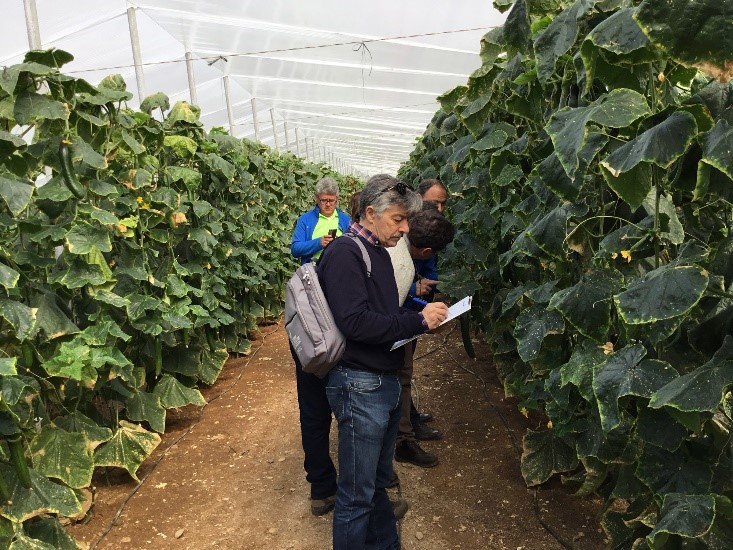White House Announces Strategy to Protect Pollinators
The White House on Tuesday announced the Pollinator Health Task Force’s National Strategy to Promote the Health of Honey Bees and Other Pollinators, which industry stakeholders have awaited since President Obama established the task force last year.
The strategy is this: “The government will provide money for more bee habitat and more research into ways to protect bees from disease and pesticides.The Environmental Protection Agency also will re-evaluate a class of insecticides called neonicotinoids … which are commonly used on some of the most widely planted crops in the country.”
The strategy lays out current and planned federal actions to achieve the following goals:
• Honey Bees: Reduce honey bee colony losses during winter (overwintering mortality) to no more than 15% within 10 years. This goal is informed by the previously released Bee Informed Partnership surveys and the newly established quarterly and annual surveys by the USDA National Agricultural Statistics Service. Based on the robust data anticipated from the national, statistically-based NASS surveys of beekeepers, the Task Force will develop baseline data and additional goal metrics for winter, summer, and total annual colony loss.
• Monarch Butterflies: Increase the Eastern U.S. population of the monarch butterfly to 225 million butterflies occupying an area of approximately 15 acres (6 hectares) in the overwintering grounds in Mexico, through domestic/international actions and public-private partnerships, by 2020.
• Pollinator Habitat Acreage: Restore or enhance 7 million acres of land for pollinators over the next five years through federal actions and public/private partnerships.
In his June 20, 2014, Memorandum, the President noted, “Honey bee pollination alone adds more than $15 billion in value to agricultural crops each year in the United States.” The memorandum also highlighted the other factors that can negatively impact honey bee health, including poor bee nutrition, loss of forage lands, parasites, pathogens and lack of bee genetic diversity.
Losses of managed honey bee colonies were 23.1% for the 2014-2015 winter but summer losses exceeded winter numbers for the first time, making annual losses for the year 42.1%, according to results of the annual survey released by USDA last week.
CropLife, Bayer Respond
CropLife America said it welcomed the report and praised the task force for creating a multi-pronged, coordinated approach.
“The crop protection industry looks forward to joining the many stakeholders in reviewing the National Pollinator Health Strategy. We are hopeful both the private and public sectors can strategically address pollinator health together,” stated Jay Vroom, president and CEO of CLA. “Pollinators add more than $24 billion to our nation’s economy, and honey bees support over 90 commercially grown crops in North America. CLA and our members support stewardship practices in seed treatment, among other key crop protection strategies, and we will continue to work with growers, beekeepers, regulators and other stakeholders to promote responsible pesticide use.”
“Early reports from unnamed sources knowledgeable about the White House report are saying that it will accelerate EPA’s timeline for further scientific evaluation of bee impacts by certain insecticides – we are skeptical of how sound science can be ‘sped up’ for this evaluation and look forward to a reasoned dialogue with EPA on that point,” said Vroom.
“We’re also keen to see how the new White House report addresses the role of long-sought state management plans outlined by EPA in edicts to state regulators over the past year,” Vroom added.
Bayer CropScience, which is the primary manufacturer of imidacloprid, welcomed the Task Force’s Strategy, calling it a “balanced and multi-faceted approach.”
“This strategy is a strong statement in favor of a balanced and multi-faceted approach to improving pollinator health,” said Dr. Becky Langer, head of Bayer CropScience’s North American Bee Care Program. “While bee populations are not declining, they face many complex challenges, some of which we’re only just beginning to fully understand. Improving honey bee health will take a concerted effort from all stakeholders, including the public, and this strategy will help provide a framework for our collective response.
Jim Blome, president and CEO of Bayer CropScience added, “We are particularly encouraged by the specific commitment to invest more into research to improve our understanding of pollinator health. Everything from grower decisions, consumer choice and regulatory actions must be based in sound science and the strategy’s call for more research will ensure that we have the best science available. We are proud to be contributing new studies and understanding population dynamics.”
Bayer has focused on collaborating with researchers to understand the factors affecting honey bee health, helping beekeepers control the dangerous Varroa mite, expanding education and outreach on pollinator health, and increasing forage for all pollinators.
The company has also spearheaded a variety of pollinator initiatives in recent years, including the Feed a Bee program. Under this initiative, it is working with people across the country to grow 50 million flowers and to increase bee forage areas by working with at least 50 government and nonprofit organizations and businesses to plant thousands of acres of flower-producing crops grown between regular crop production periods for bees.






